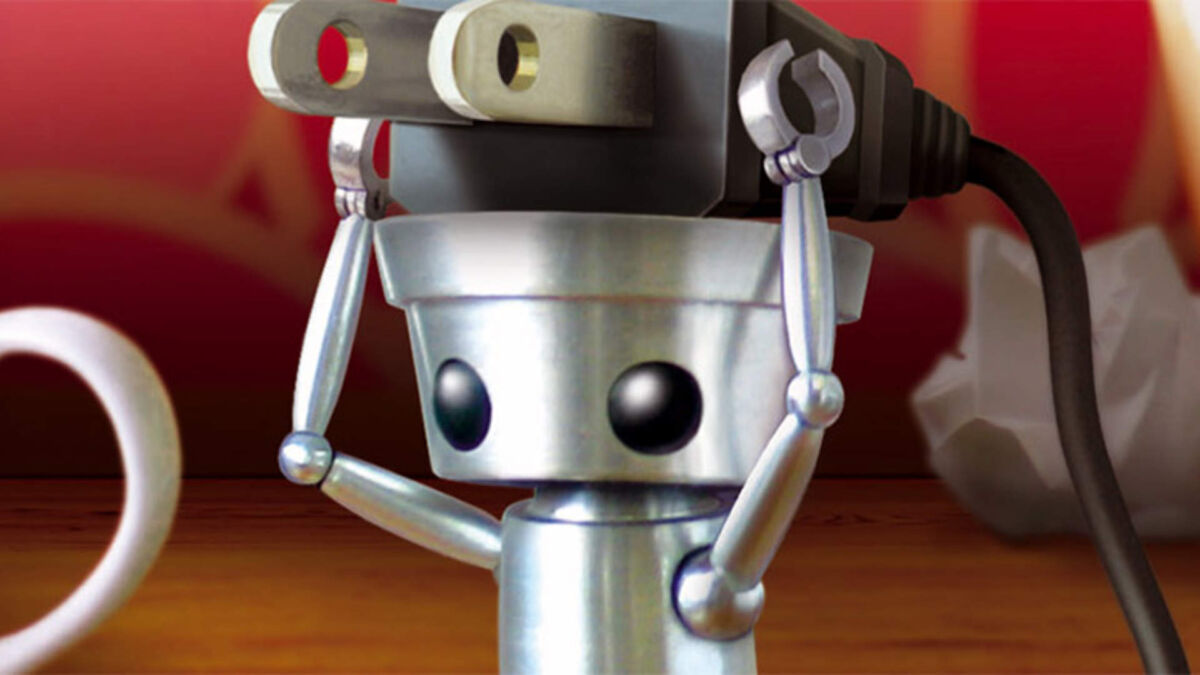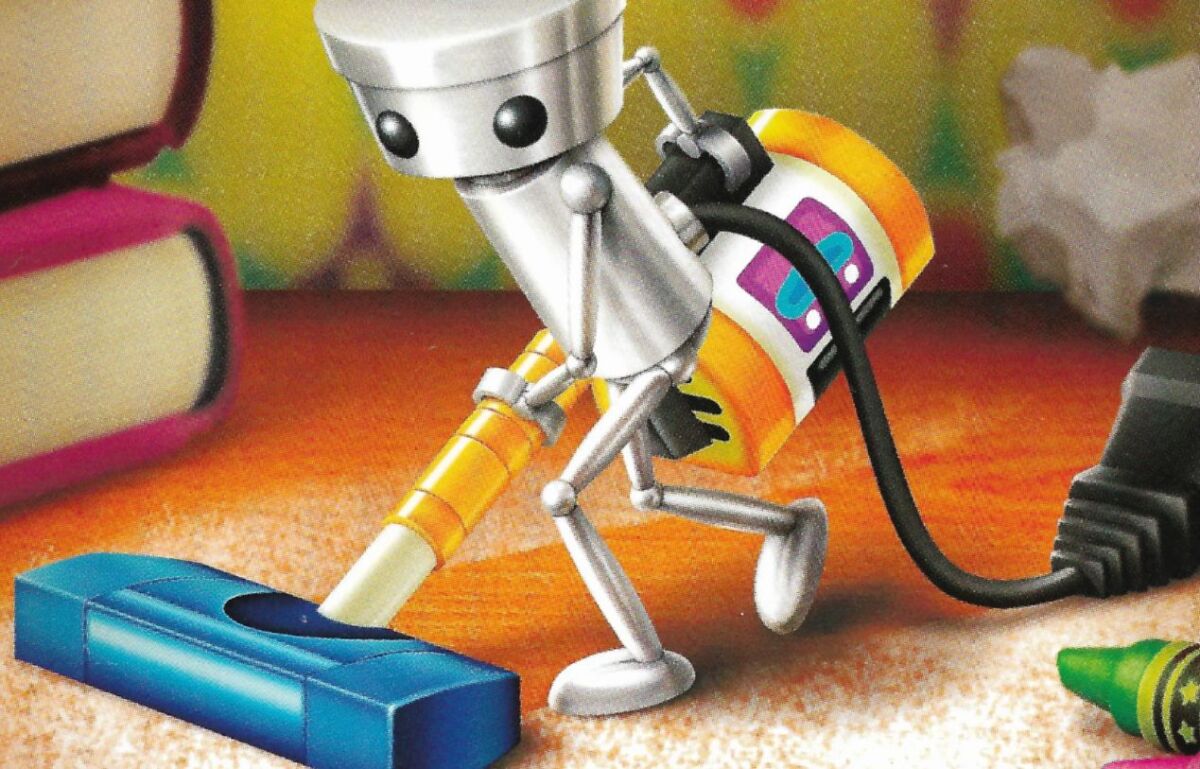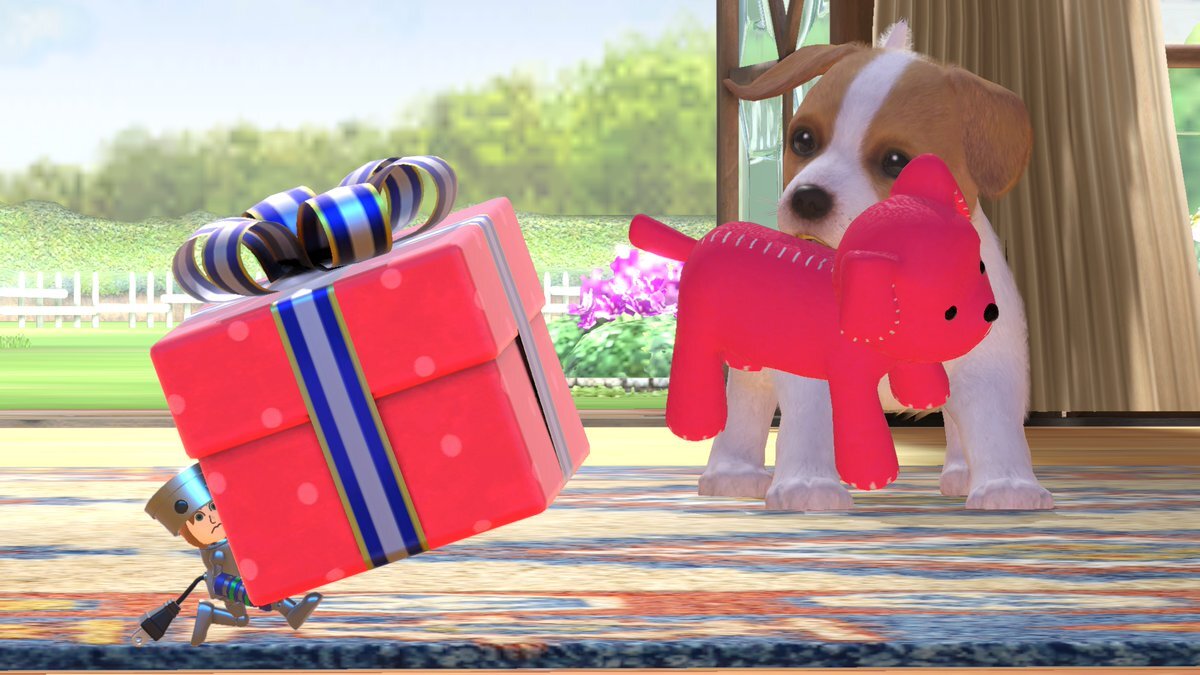There’s a small but compelling subsection of games that focus on the spectacle of scale: Little Nightmares, Pikmin, and Mr. Mosquito jump to mind as games where players control a tiny figure in a giant world, with all the whimsy and/or terror that comes along with said premise. Among this small-but-mighty subsection of games, there’s one tiny giant that might get lost in the crowd: a little cleaning robot named Chibi-Robo.
Fresh Out Of The Box (Chibi-Robo!)

The first Chibi-Robo game, simply called Chibi-Robo! and subtitled ‘Plug Into Adventure!’, was released in Japan in 2005, and Europe and North America in 2006. It was a Nintendo Gamecube exclusive developed by Bandai and Skip Ltd. and published by Nintendo, and would be re-released on the Nintendo Wii in 2009.
Players controlled the titular character, a 10-cm tall domestic robot that has been purchased by the Sanderson family: high-strung Mom, recently-fired perpetual man-child Dad, and daughter Jenny who thinks that she’s a frog. In addition, Jenny’s toys come to life at night and have their own personalities and hang-ups, like showboating action figure Drake Redcrest, or Princess Pitts, a princess doll who needs Chibi-Robo to dress up like a ghost to help her face her fears.
The gameplay mostly consists of performing domestic chores: scrubbing away stains with a toothbrush, throwing away trash, and flipping tiny burgers on a tiny grill. Chibi-Robo, being an appliance, also has to occasionally plug into an outlet and recharge their batteries. Exploring the massive Sanderson house gives Chibi-Robo the ability to buy upgrades and new outfits/tools which can open up more paths of exploration and side activities.
In addition to being a vibrant-looking, fun environment to explore, the Sanderson house is host to strange events — the plot of Chibi-Robo! quickly moves past its goofy sitcom set-up to deal with heavy topics like depression, divorce, and evil spider robots. The game was a moderate success, earning positive, if not overwhelmingly so, reviews, with critics lauding the story and characters, while noting the repetitive gameplay and frustrating camera.
Parks & Robo (Chibi-Robo!: Park Patrol and Okaeri! Chibi Robo! Happy Richie Ōsōji)

After the first game’s cult-hit status and warm reception for the Chibi-Robo character, Bandai and Skip Ltd. followed up with a sequel for the DS, Chibi-Robo!: Park Patrol in 2007. Following a different Chibi-Robo, players were now tasked with cleaning up a park and fending off pollution. It ditched the supporting cast of the first game in favor of a new group of friends, and new items like vehicles for Chibi-Robo to use in the new mostly outdoors setting.
Park Patrol was also received warmly, with a slightly higher Metacritic score than its predecessor. Some critics did take issue with the game’s smaller, less vibrant setting and iffy sound design, while others praised the sequel’s relaxed, inviting atmosphere. However, Park Patrol’s success was hampered by a single baffling business decision: in the West, it was a Wal-Mart exclusive title, which prevented it from reaching a wider number of players.
In 2009, a third Chibi-Robo game, Okaeri! Chibi Robo! Happy Richie Ōsōji, also released for the DS, but has never been released outside of Japan. The game saw Jenny, the child from the first game, all grown up with a child and dog of her own, purchasing a Chibi-Robo to help around the house. This was a return to the spirit of the first game, prioritizing around-the-house exploration for the small robot. The series’ sense of bizarre whimsy returned in full form again, with memorable characters like the ghosts running a casino in the house’s attic and more childrens’ toys with personal problems. Critical information for the game is hard to find, but it did receive a 34 out of 40 from Japanese games review magazine Famitsu.
Trashed Appliances (Chibo-Robo! Photo Finder & Chibi-Robo! Zip Lash)

So after a trilogy of fun, positively-received games, Chibi-Robo went on hiatus for a few years. But when the time came for a new title on the 3DS, how would Skip top themselves this time? Well, with 2013’s Chibi-Robo! Photo Finder, also called Chibi Robo! Let’s Go, Photo!, as it’s called in Europe and Australia. Chibi-Robo now works for a hapless museum curator, who needs photos of real-world items to fill his museum. Chibi-Robo now mostly does in-game tasks to save up enough in-game currency to buy film to take photos with the 3DS’ internal camera. There were still some amusing side characters and diverting miniseries that resembled the charm of previous Chibi-Robo games, but critical reactions were mild at best.
After the confusing rebrand of Photo Finder, fans were hoping that future Chibi-Robo titles would return to the franchise’s exploratory, colorful, and surprisingly mature narrative roots. Instead, they got Chibi-Robo! Zip Lash, released in 2015. Instead of the previous 3D exploration gameplay, Zip Lash is a 2D side-scrolling platformer, where Chibi-Robo traverses levels and hits enemies by throwing his own power cord around. The switch to a 2D side scroller was decided due to the development team wanting to broaden the Chibi-Robo series’ appeal in the west, according to a report from Nintendo World. This time Chibi-Robo must travel the world and fight off aliens who are stealing earth’s resources — easily the most flat and generic plot of any game in the series.
Critical response to Zip Lash was, in a word, underwhelming: many critics considered the game’s level design and progression boring, the controls sluggish, and the mechanic of controlling Chibi-Robo’s plug with the 3DS’ d-pad underdeveloped.
The game’s level progression also received heavy criticism — instead of choosing which level to go to next, players have to spin a “Destination Wheel” after each level, meaning that a lot of repetitive, unnecessary retreading was inherent in the game’s design. On the brighter side of things, Zip Lash was also notable for coming with a Chibi-Robo amiibo, which was something.
Skipping Out

In the years since Zip Lash’s underwhelming release, not much has been said about the future of Chibi-Robo. Skip Ltd. hasn’t put out another game since then, and many believe the company is, or soon will be, officially defunct. The disappointing commercial performance of Zip Lash suggests it’s the final game in the Chibi-Robo series, a sour note to go out on.
There have been some minor blips on the Chibi-Robo radar: The Super Smash Bros. series featured Chibi-Robo trophies and stickers in Super Smash Bros. Brawl and Super Smash Bros. for the 3DS. Fan hope for Chibi-Robo joining Smash as a playable character were compromised when Super Smash Bros. Ultimate added a Mii Costume for Mii gunner archetype based off of the little robot. Chibi-Robo thus joined the illustrious list of video game characters who got into Smash on a technicality, alongside fan favorites like Shovel Knight, Sans Undertale, Bomberman, and Dante from the Devil May Cry series.
While there haven’t been any official new announcements for the little cleaning robot in quite some time, Chibi-Robo fans continue to keep their ears to the ground and hope for good news. In 2018, Nintendo of America tweeted an image of a ‘fiery Chibi-robo’ ahead of a Nintendo Direct, leading fans to speculate about a new game. No game was announced. Since this false start, a small-but-passionate Chibi-Robo speedrunning community celebrated a breakthrough earlier this year.
The Future of Chibi-Robo

As it stands, Chibi-Robo will likely stay in its current position for some time to come: a unique oddity from late in the Gamecube’s life cycle that captured a small but vocal fanbase. While the journey wasn’t always smooth, and subsequent releases failed to recapture the magic of the first game (though us Westerners will likely never know how well the third game works, barring some miraculous localization), Chibi-Robo still delivered some good times for the players who picked it up. If becoming a cosmetic item in a game like Super Smash Bros. is the last we see of the adorable little metal cleaning drone for a while, then it’s at least some kind of reward.
The development history of Chibi-Robo is also yet another case to be made for game preservation. While Gamecube/Wii games may feel ancient in a gaming timeline, 15 years ago is not that far gone. But how can players play games from an entire decade-and-a-half ago? Without any kind of virtual console, or any means of backward compatibility or digital access for past games, the video game industry’s going to be facing a rapidly-deteriorating sense of video game amnesia. In the world of movies, 2006 saw the release of 300, The Fast and the Furious: Tokyo Drift, The Departed, and Nacho Libre. Imagine if other media forms burned bridges the way video game console progression does.
Dominic Torreto’s past adventures and his love of family are accessible — why can’t the same be said for Chibi-Robo?
READ NEXT: The History Of Far Cry
Some of the coverage you find on Cultured Vultures contains affiliate links, which provide us with small commissions based on purchases made from visiting our site.
